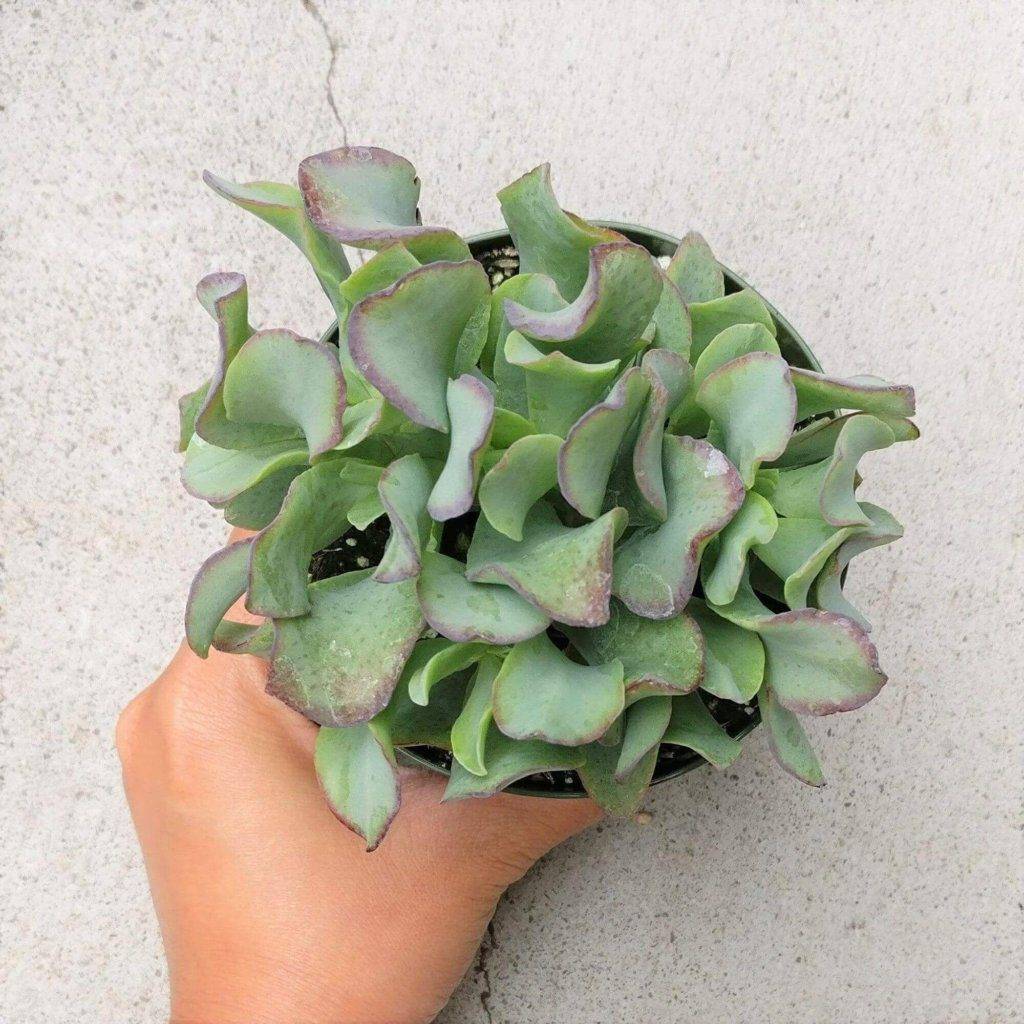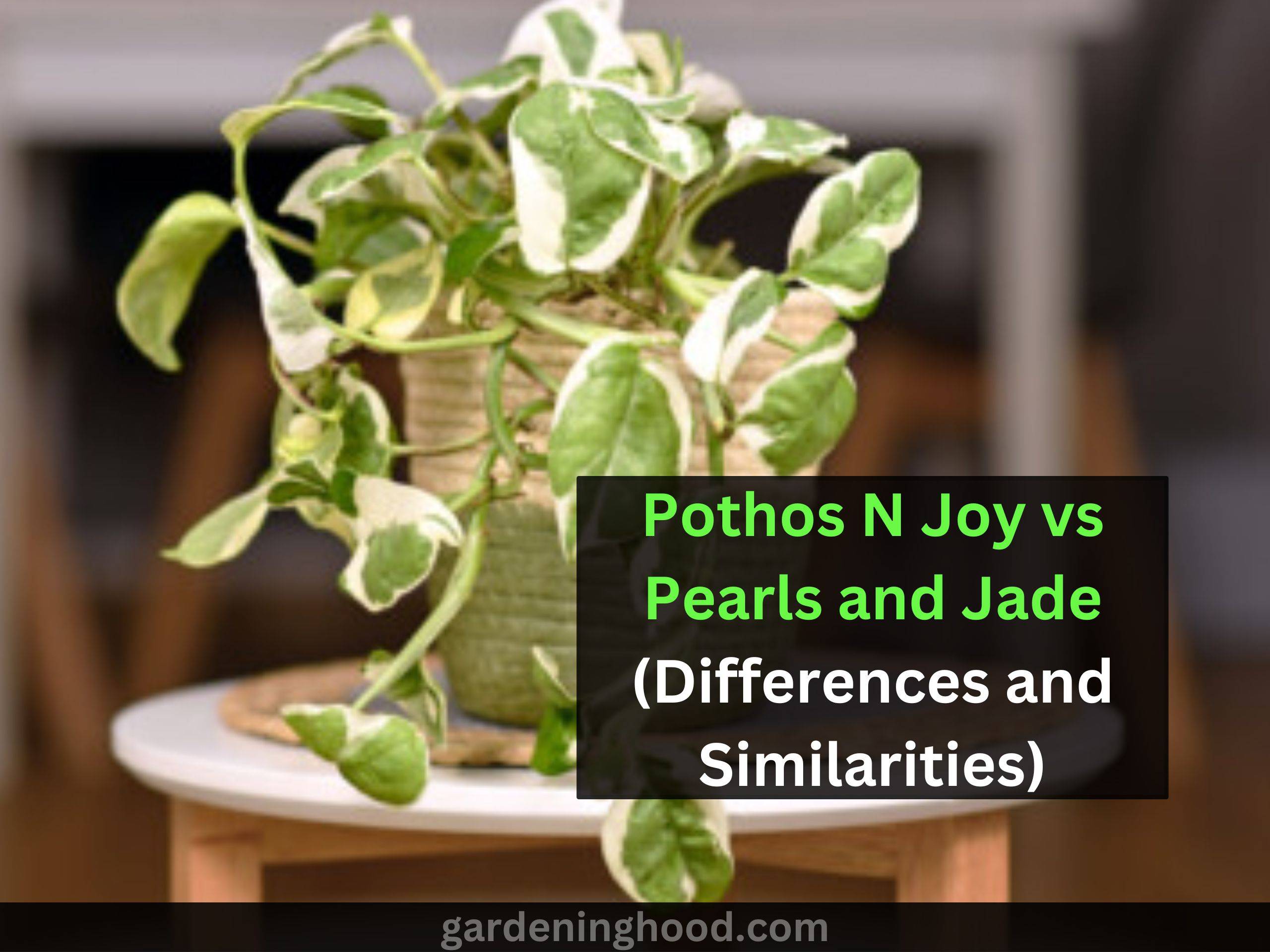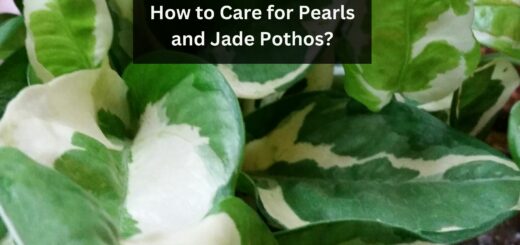What is a Ripple Jade? – Growth and Care Tips for Ripple Jade
Hey folks! Welcome back!!!
I hope you are doing wonders in your gardening field. So, today I am here with an interesting topic for you all. Have you ever heard of the Ripple jade plant?
Do you know What is a Ripple Jade? As the name suggests Ripple Jade, is a type of succulent with ripply leaves. It is usually grown as a houseplant. Let’s know more details in this article about the Ripple Jade, its growth, and care tips.
Quick takeways:
- Any succulent plants with their thick, fleshy leaves and stems, allow them to retain water so that they do not need watering as frequently as other plants.
- These plants require minimal care and can live through even if dilapidated.
- With minimum water, good sunlight, and a few sweet words from the owner, they can make the best companions for those who reside alone as they add liveliness to the place.

About Ripple Jade
Ripple Jade is a beautiful indoor succulent with curly or curvy leaves, thus getting its name from the leaf shape which is also known as ” The Curly Jade“. It is native to the regions of the South African Continent. It is a perennial plant thus it is an investment that we can enjoy for a longer time.
Being a perennial, Ripple Jade is enjoyable all year round. The Blue-green leaves of this plant are curly, twisty, and fleshy. Like many Jade succulents, Ripple Jade also emerges from a central trunk and has woody stems. It is scientifically known as Crassula Ovata.

Ripple Jade is a low-maintenance plant and can thrive without water for a few days. This plant prefers full sun and in favorable growth conditions, this plant bears pink star-shaped flowers. Favorable conditions include full sun for approximately 6-8 hours and a good spot that is frost and humidity-free. This plant’s leaves may also get sunburn so placing the plant at an appropriate spot is very important.
Ripple Jade thrives in dry and warm weather conditions and frost is a big no-no for this plant. It is a compact plant with beautiful curvy round leaves and colorful purplish leaf edges.
Let us know a few more details regarding the Ripple Jade plant.
| Common Name | Ripple Jade, Curly Jade, Silver Jade, Chinese Jade, Money Tree |
| Botanical Name | Crassula arborescens undulatifolia |
| Soil Type | Sandy well-drained soil, this plant enjoys an additional layer of perlite in the soil for good drainage. |
| Soil pH | Slightly acidic soil around 6.0 on the pH scale. |
| Watering | Only requires watering when the topsoil is completely dry, overwatering may damage the plant. Typical water requirements as succulent or fewer watering session requirements. |
| Drainage | Needs a Well-drained soil |
| Temperature | This plant can thrive through temperatures as low as 20 F but the plant does not do well in cold and frosty climates. This plant loves hot weather. |
| Flowering/Nonflowering | Flowering |
| Flower colour | Pink, Star-shaped flowers  |
| Flowering Season | Spring to Summer |
| Specialties | These plants can be grown in sunny spots indoors or even they grow very well outside. These plants can be easily cultivated. This plant does not do well in cold and frosty climates. This plant loves hot weather. Favourable conditions include full sun for approximately 6-8 hours and a good spot that is frost and humidity free. This plant’s leaves may also get sunburn so placing the plant at an appropriate spot is very important. This plant can be easily propagated from leaf cuttings. This plant prefers warmer climates over cold climates. Thus during winters, this plant should be moved indoors and try to keep the plants warm in winter. |
| Height | 3′ to 4′ at maturity |
| Width | 6″ to 9″ at maturity |
| Sun Exposure | Full to partial sun exposure |
| Hardiness Zone (Hardiness – The ability to endure difficult weather conditions) | 10-12 (USDA) |
| Native | Native to the Western Cape, South African Continent. |
| Toxicity | Toxic or poisonous to pets or animals, especially cats. |

How to Grow Ripple Jade?
Folks, as you know there are various succulents in the world of plants. One of the succulent is the ripple jade which tends to grow easily in your home garden.
It can be grown with the help of seeds but it will take time and the success rate is also not sure. So, like other plants, one of the easiest ways to grow a plant is via cuttings. So, below are the steps to follow:
Choose the cutting
- One of the steps is to choose the cutting from the parent plant.
- You have to grip the leaf between your fingers and pull it gently.
- Then you have to clean the stem.
- You have to choose more cuttings for the earlier success of the plant.
- For a few days, you have to let the cuttings callus on the paper towel.
Select a Clay Pot
- Now is the time to choose a good pot that should be a porous clay pot or a terracotta pot.
- Be cautious to choose a pot that has a good amount of drainage holes.
- It will not let the plant get spoiled and also saves your plant from root rot.
- The plant requires water at an earlier stage but water less when it gets mature.
Preparation of soil
- The next step in planting the cutting is to prepare the soil in the plant.
- You have to choose soil that is loamy and well-drained.
- You have to prepare the container with a mixture of well-drained soil.
- So you should be slightly acidic.
Choose a good location
- The good location of the plant plays a great role in the healthy growth of the plant.
- If you live in a cool region, then you have to plant this plant indoors as a houseplant.
- Provide them with a good amount of 6 hours of sunlight for their well-being.
- So, you have to keep them near the window so that they get a good amount of sunlight.
Plant the cutting
- Now you have to place the cutting in the soil in the container.
- Also, cover the cutting with the soil and damp it gently so that it spreads evenly.
Water the cutting
- Last but not least, you have to keep misting the plant.
- It is suggested to water the plant at the beginning of the planting.
- You have to keep doing so until new growth emerges in the plant.

Care Tips for Ripple Jade plant
This plant is low maintenance with just basic requirements.
Sunlight needs
- Sunlight required by the jade plant is more as they require bright indirect sunlight for their growth.
- Keep in mind not to provide them with over sunlight, as that can be hard for the plant and make burns in the leaves.
- Also, less supply of sunlight will harm the plant by making the leggy growth in the plant.
Soil needs
- Jade plants require well-drained soil for their growth. Succulent-specific blends will also suit best for your plant.
- Choose a small that is Sandy and should contain perlite.
Watering needs
- The water requirement of this plant will change from year to year.
- It is because, in the time of spring and summer, they grow actively and require more water.
- On the contrary, at the time of winter, they are in the dormant period so they require less water.
- Do not overwater the plant as it will cause root rot in the plant and the plant will not handle that environment and will die.
Temperature and Humidity needs
- Ripple jade plants like average temperature for their growth rent from 65°F to 75°F.
- At night they will require a temperature below 55°F and also in winters.
- Choose a location for your plant, where there is a good amount of humidity for their good growth.
Fertilizer needs
- Fertiliser is required by every plant; the same is true with a succulent.
- They require to be fertilized when the plant is actively growing in its season.
- You have to make use of slow-release fertilizer in the starting.
- Feed them with balanced fertilizer with a ratio of 20-20-20.
Potting and Repotting needs
- At the time of reporting a plant, you have to choose a pot that is the same size as the present plant size.
- As you know these plants are small root system plants, so the containers will not benefit them.
- If a plant is too deep, then it also causes moisture problems in the plant by producing fungal infections in the plant.
- So using a plant with a good amount of drainage holes will suit them best and it should be 4 inches to 6 inches.

Growth Tips
Growing Ripple Jade from seeds is very difficult due to its low germination rate, so it is better to propagate this plant through leaf cuttings. This plant can be grown in containers or pots, but they also grow well on soil beds outside with favourable weather conditions. These plants look very aesthetic on borders or edges in gardens.
For more such plant related-articles, you may also read, What is a Sedeveria Lilac Mist? – How to Grow Lilac Mist Succulent Plant?
These plants can be grown in sunny spots indoors or even they grow very well outside. These plants can be easily cultivated. This plant does not do well in cold and frosty climates. This plant loves hot weather. This plant prefers warmer climates over cold climates. Thus during winters, this plant should be moved indoors.
Wrapping up the Context
In this guide, you come to know that Ripple Jade is a beautiful indoor succulent with curly or curvy leaves, thus getting its name from the leaf shape which is also known as ” The Curly Jade“. It is native to the regions of the South African Continent. It is a perennial plant thus it is an investment that we can enjoy for a longer time.
Being a perennial, Ripple Jade is enjoyable all year round. The Blue-green leaves of this plant are curly, twisty, and fleshy. Like many Jade succulents, Ripple Jade also emerges from a central trunk and has woody stems. I hope you understand this guide well. If not, then read it thoroughly for its understanding.
Thanks for reading! Happy Gardening!
FAQs
Why does my Ripple Jade have brown spots on its leaves?
This can happen if an indoor placed Ripple Jade is suddenly moved outdoors and exposed to over sun exposure. But there is nothing to worry about as this plant enjoys good and full sunlight.
How to care for a Ripple Jade which is planted outside?
This plant needs bright light, but it should not be exposed to the full sun for a longer period as it may get damaged due to sunburn on the leaves. 2-3 hours of full morning sun and 3-4 hours of partial sun can do wonders for this plant.
Why is my Jade plant stem turning black?
Jade plant stems tend to turn black due to excessive moisture around the roots causing root rotting.


